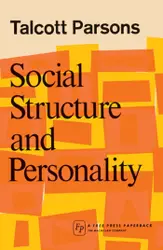In the 1990s regulators and policy makers worried about the risk that financial institutions were carrying. Once the walls between investment and commercial banking came down with the repeal of Glass-Steagall, both trading and lending (and everything in between) were now housed under one roof with institutions freely accessing funds from one part of the institution to the other. But Glass-Steagall had just been repealed so how to fix the risk problem? Where there is a problem, there can usually be found an entrepreneur to give the market the product they want. And thus VAR was born and quickly embraced by financial institutions and regulators as the answer to managing risk. As long as an institutions VAR number was in an acceptable range, it could do what it wanted. Werent we all safer now? As it turns out, the answer was No. The metric not only hid the iceberg lurking beneath the surface but allowed banks to pile on more and greater risk. Each bubble, mania, and crash that em
The Number That Killed Us
Kom i gang med denne boken i dag for 0 kr
- Få full tilgang til alle bøkene i appen i prøveperioden
- Ingen forpliktelser, si opp når du vil
Forfatter:
Oppleser:
Språk:
engelsk
Format:

Progressive Dystopia
Savannah Shange
audiobook
Our Non-Christian Nation
Jay Wexler
audiobook
Survivor and the Endless Gaze
Sallie Tisdale
audiobookbook
Moslem and Frank : Charles Martel and the Rescue of Europe from the Threatened Yoke of the Saracens
Gustave Louis Strauss
book
Social Structure & Person
Talcott Parsons
book
Counting : How We Use Numbers to Decide What Matters
Deborah Stone
audiobook
The Accidental Admiral
James Stavridis
audiobook
Gender
Susan Kingsley Kent
audiobook
Truth Is Trouble : The strange case of Israel Folau, or How Free Speech Became So Complicated
Malcolm Knox
audiobookbook
Reefer Madness : Sex, Drugs and Cheap Labor in the Black Market
Eric Schlosser
audiobook
What's Your Emotional I.Q.
Aparna Chattopadhyay
book
Breaking the Gender Code
Danielle Dobson
audiobook

